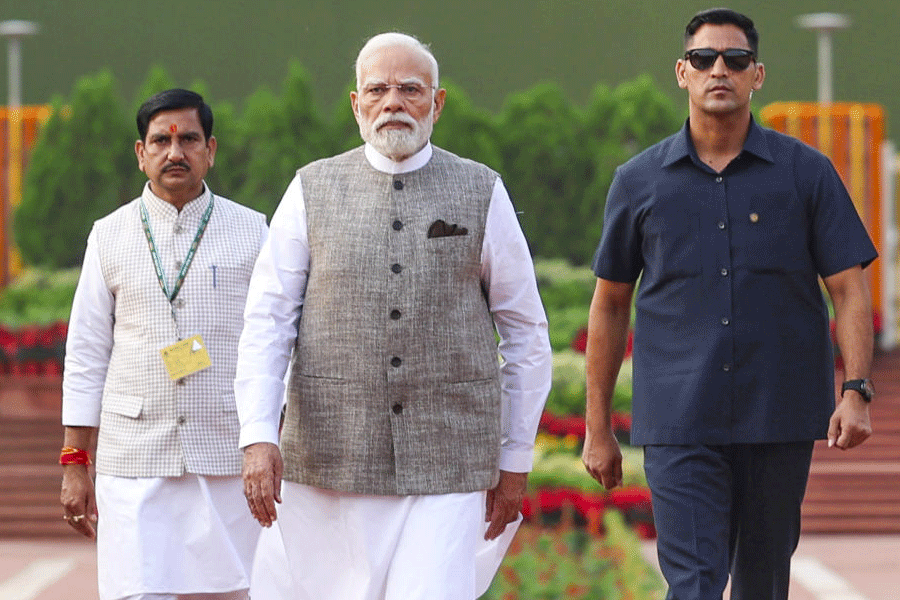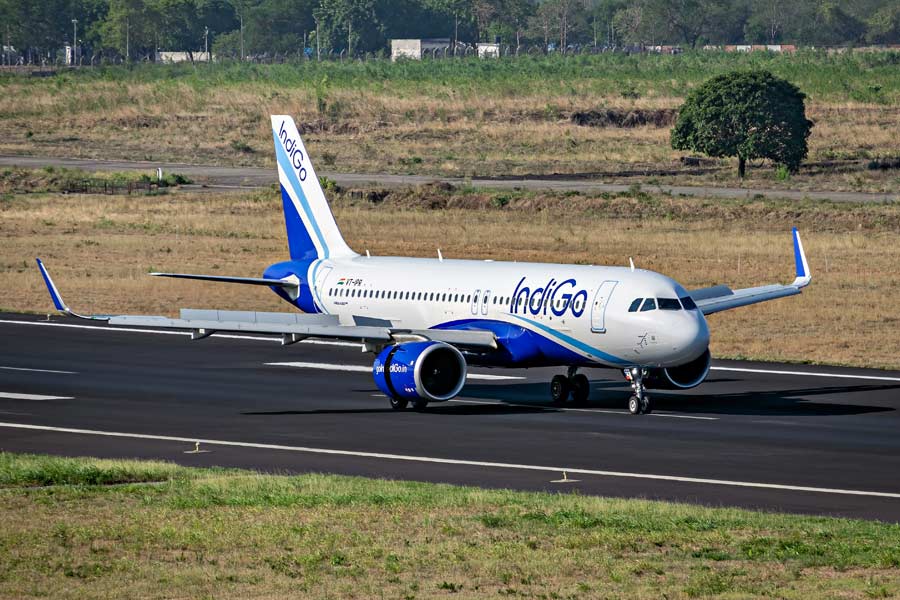
Raise a toast to Karnataka. While wine is sold in the rest of the country in bottles, the southern state will be hawking it in - surprise, surprise - tetrapacks and 250ml cans.
You will also be able to buy a single-serve (one glass) bottle of wine, and red and white wine in easy to carry plastic bottles - some labels offer 350ml bottles for as little as Rs 150 - and even bulk wine. North Karnataka wineries offer wine in 20-litre returnable plastic bottles. Also on offer will be wines in a bag-in-a-box (a plastic bag inside a box) and wine coolers in 330ml bottles.
If that wasn't enough, Bangalore, the pub capital of the country, is all set to offer wine on tap.
All this, of course, is the result of a quiet revolution that's underway in Karnataka.
Cut to the Nandi region, 45km north of Bangalore. "We are buying up that land for parking space for our increasing number of visitors," says J.V. Mohan Rao, wine consultant and winemaker, as he points towards the dusty bare lots in front of Heritage Winery. Apart from hosting wine-tasting events and a multi-cuisine restaurant, the winery is expanding its production capacities, exporting to markets like Dubai, and now plans a 10-room resort for enthusiastic and aspiring oenophiles.
Heritage Winery is in good company. Others wineries such as SDU in Chikkaballapur (which like HW boasts the Nandi tag), Krsma in Hampi hills and Alpine Wineries (Cauvery valley region) are among the 17 licensed wineries in Karnataka that are grape-deep in stoking an accessible wine culture in the state.
They're also seeking to popularise the fermented grape juice as a sophisticated healthy alternative to hard liquor through wine courses.
Indeed, wine tourism, with wineries offering imported and domestic brands and food that goes with them, is in full flush.
Khushali Sangwani likes to go wine-tasting on weekends with her friends. "We are a bunch of working mothers who drive out once a month to wineries close to Bangalore and hang out," says the 40-something entrepreneur.
Sure, some of the wineries predate 2007, when the government set up the Karnataka Wine Board (KWB), the country's only such wine agency. But the surge in wine drinking and tourism is being boosted by some spirited efforts by the state.
"We have reduced the charges for wineries and introduced innovative licences," says Sarvesh Kumar, manager, KWB. Consider this:
• The annual licence fee for a winery was slashed from Rs 50,000 to Rs 5,000.
• Individuals and commercial establishments that want to serve wine to large groups can buy a licence for a day for Rs 1,000. Licences for taverns and wine shops cost as little as Rs 1,000 and Rs 5,000 a year, respectively.
The state has also categorised grapes as an agricultural product and wineries as part of the horticulture and food processing industries and, in a bid to boost wine tourism, allowed wine to be sold at wineries. It also gives subsidies under the National Horticulture Mission to wineries.
The Karnataka government has also set aside 56 hectares in Bijapur, in north-east Karnataka, for a wine park, to be set up under the public-private partnership model. And it is actively promoting wine fests in such unlikely places as Chennapatna, Mysore, Hubli, Dharwad and Belgaum.
As a result, the number of retail stores and places to drink is multiplying. Sales and output have nearly trebled in six years, says Kumar. Wine sales in Karnataka touched Rs 178 crore and 63.08 lakh litres in 2014-15, up from about Rs 60 crore and 22.93 lakh litres in 2009-2010.
"Social mores have become more relaxed and wine is gaining more acceptability without overt concerns of misuse," says Heemanshu Ashar, a Bangalore-based brand consultant and wine expert.
All this, of course, represents a dramatic turnaround from the picture four years ago when the state's wine industry was in the dumps. Then, non resident Indians and farmers with little marketing knowledge had rushed to start vineyards, lured by the difference between grape prices and the prices of wine. Most burned their fingers.
Now, led by what Ashar calls "the democratisation of wines" in terms of variety and packaging, happy days are back again. "The industry is growing realistically now compared to the gold rush earlier," adds Ashar.
Still, Karnataka lags behind Maharashtra in wine production, retail sales and wine tourism. Maharashtra has 69 wineries; Karnataka has 17. Sula alone in Maharashtra produces 70 per cent of India's wines and rolls out nearly a million cases annually.

Wines come in two types: fortified (which has alcohol added to it) and fruit (read: grape) which is aged in barrels. With new wine drinkers taking to fortified wine, the wine base at the entry level is becoming broader, says Ashar. New offerings along with reserve wines (usually aged or higher quality wines) also help to "evolve the palate of the young consumer," he adds.
SDU Winery launched its brand of wines SDU Deva and SDU Reserva - Syrah, Cabernet Sauvignon and Chardonnay varietals - in 2013, 10 years after it started its 50-acre vineyard. Reserva quickly lapped up awards. "Deva caters to both the first time wine drinker and the connoisseur while the Reserva range is a premium offering, aged in French oak barrels for 12 months before being bottled," says Mohit Nischol, business head, SDU Winery. The latest, this year, is Trilogy, SDU's first blended wine which is available only in Karnataka.
"The industry is large enough to accommodate a number of wineries with products at different price points. There is going to be a shift to fruit wine, versus fortified wine which has a 75 per cent share of the domestic market in volume terms. However, this shift is contingent on predominant players in the industry coming out with fruit wine brands at affordable price points," says Raghavendra Gowda, managing director, Alpine Wineries.
India is still a tiny market when it comes to wine consumption - only 0.07 litre per person a year. But the market is growing at an annual clip of 25-30 per cent, three times as fast as that of beer, whisky or rum.
Audacious as it may sound, Karnataka's producers are exporting wine to destinations as diverse as New York and Dubai. Heritage ships Shiraz and Cabernet from its vineyards to London; Bangalore Blue (grape varietals) exports to Dubai (one litre for Rs 130!) where, Rao says, its Heritage-2000 Premium, a sweet white, is "a hit with Dubai sheikhs' wives". SDU started exporting small batches of wines to Singapore and Nepal, then to Norway and is now exploring the Japanese and Malaysian markets.
For Krsma Estates vineyard, the second destination after launching its wines in Bangalore was New York this year. "The Krsma Cabernet Sauvignon is the most expensive Indian wine in the world," claims Vishal Nagpal, business head, Krsma. It retails for around $50 (and nearly double that in tony Big Apple restaurants).
But the industry faces several challenges. Rao taps his forehead and says, "Drinking anywhere in the world is here. It is all in the head and mind. The average Indian drinker wants red, sweet and with a 'kick'."
High taxes too are a barrier to expansion."Wine is considered on par with spirits and taxed the same way. Until we bring down taxes, the wine culture in India will remain restricted to a few states," cautions Nischol.
Even so, the state's wine producers are on a high. The grapes, clearly, are not sour.











